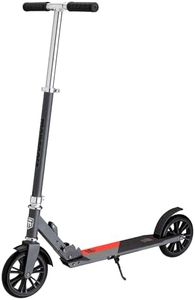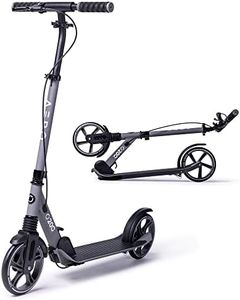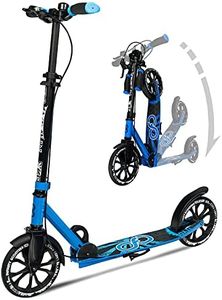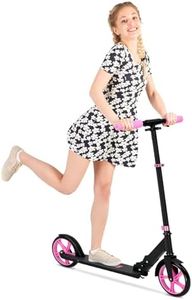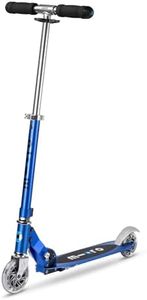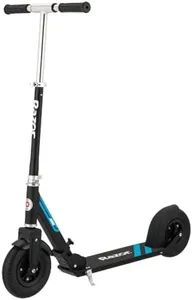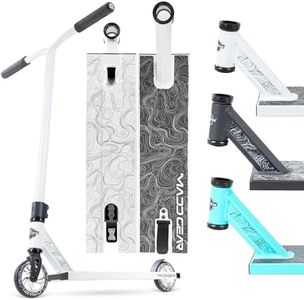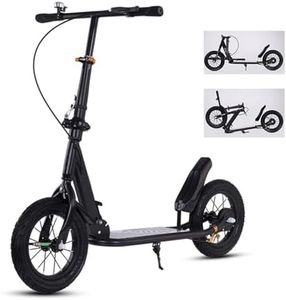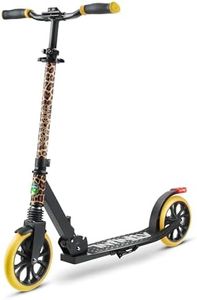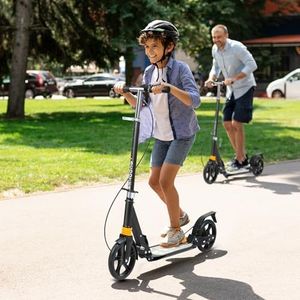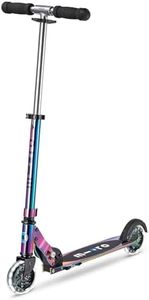We Use CookiesWe use cookies to enhance the security, performance,
functionality and for analytical and promotional activities. By continuing to browse this site you
are agreeing to our privacy policy
10 Best Kick Scooter For Teens
From leading brands and best sellers available on the web.Buying Guide for the Best Kick Scooter For Teens
Choosing a kick scooter for teens involves understanding both the functional and safety aspects to ensure it matches their needs and lifestyle. Teenagers often use kick scooters for commuting to school, leisure rides, or performing tricks, so the right choice depends on how and where they plan to ride. Always consider comfort, durability, and safety as priorities while balancing features like size, weight, and portability. By examining the main specifications, you can narrow down a scooter that is suitable, reliable, and fun for a teen.Wheel SizeWheel size determines how smooth and fast the ride will be. Smaller wheels (around 100-120mm) are more agile, making them good for tricks and short distances but are less stable on rough roads. Medium to large wheels (around 120-200mm) roll over bumps more easily and provide a smoother, faster ride for longer distances, making them a good choice for commuting or mixed-use. Teens who want more speed or plan to use the scooter on various terrains should consider larger wheels, while those focused on agility and tricks might prefer smaller wheels.
Deck Size and HeightThe deck is the standing platform of the scooter. A wider and longer deck offers more foot room and stability, which is comfortable for beginners or those using the scooter for longer periods. Narrower decks are lighter and better suited for stunts but might feel less stable. Deck height from the ground affects ease of pushing and control—a lower deck is easier to kick but may scrape on uneven terrain, while a higher deck gives more clearance but requires more effort to push. For teens, consider a deck size and height that matches their foot size and intended use—commuting needs comfort, while tricks require agility.
Handlebar Height and AdjustabilityProper handlebar height is crucial for comfort and safety. Adjustable handlebars allow the scooter to grow with the teen, accommodating height changes and shared use among siblings. For most comfortable riding, handlebars should be about waist to hip height when the rider stands on the deck. Fixed-height handlebars are lighter and common on trick scooters but less adaptable for general use. Choose a scooter with adjustable handlebars if you want long-term use or need flexibility, or opt for a fixed bar if tricks are the main priority.
Weight CapacityWeight capacity refers to the maximum load the scooter can safely support. Most teen scooters support between 80-100kg (approximately 175-220 lbs), but it's important to check this to ensure safety and durability. Picking a scooter with a weight capacity well above the teen's current weight gives extra peace of mind, especially as teens may grow or if the scooter might be used by heavier riders occasionally.
Foldability and PortabilitySome scooters fold for easy carrying and storage, which is especially useful for teens who need to take their scooter on public transport or store it in tight spaces like school lockers. Non-folding models are usually stronger and better for tricks. If portability and convenience are priorities, look for a scooter that folds and is lightweight enough to carry, otherwise, choose a solid frame model for higher strength and durability in active use.
Brake TypeThe brake system is an important safety feature. Most kick scooters use a rear foot brake, which is easy and intuitive, ideal for most teens. Some models offer handbrakes, which can provide additional stopping power, especially helpful for riding at faster speeds or on hills. For everyday use, a simple foot brake usually suffices. Teens riding faster or in hilly areas may appreciate the extra control of a handbrake.
Build Materials and DurabilityScooters are typically made from aluminum, steel, or a combination. Aluminum scooters are lighter and easier to carry, while steel adds durability and strength, especially for heavier or more aggressive use. Take into account how rough the teen is likely to be—a scooter with reinforced construction and quality components will last longer if it's used for tricks or daily commuting.
